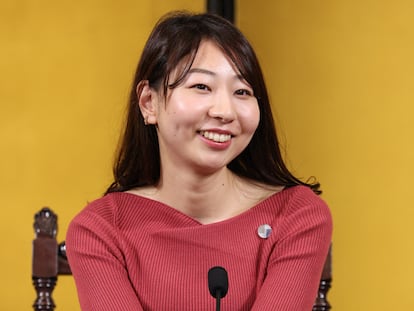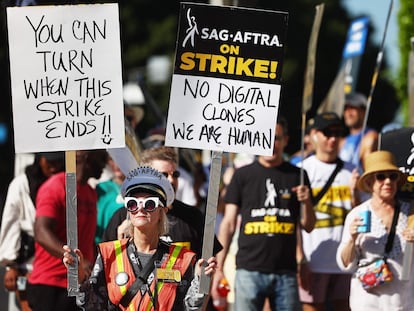Jane C. Ginsburg, intellectual property expert: ‘We are not ready to accept the idea of the machine being the author’
The Columbia University professor and daughter of U.S. Supreme Court Justice and feminist icon Ruth Bader Ginsburg, reflects on the challenges posed by new technology
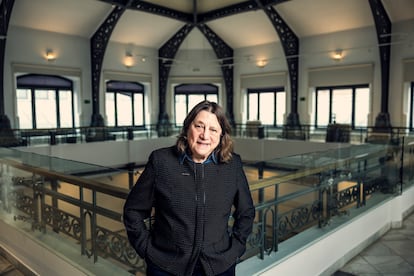
At the end of the 19th century, at the dawn of photography, there was a strong debate about whether what photographers did had authorship or not, since, after all, it was a machine that was producing the image. The issue reached all the way to the U.S. Supreme Court, which decided that, “even though a machine was involved in the creation of the work, the work showed the ideas in the mind of the author that are given visible expression, so it’s not just an idea, it’s also how you put it down,” explains Jane C. Ginsburg, 68, a professor of literary and artistic property law at Columbia University in New York and an expert in intellectual property.
Her remark is in reply to a question about the challenges posed in her field by generative artificial intelligence (AI), which can produce new results based on what it has learned. “AI has made copyright lawyers think back to basic principles,” adds the jurist, whose mother was Ruth Bader Ginsburg (1933-2020), the celebrated lawyer who defended women’s rights and later sat on the Supreme Court. In mid-March, Ginsburg participated in a Madrid conference organized by Spain’s music copyright organization, the General Society of Authors and Editors (SGAE), about the impact of these new intelligent technologies on the intellectual property rights of cultural industries.
Following the example of the photography authorship debate, who would be the author of a product resulting from generative AI? The person who presses the button?
What does it mean to take a photograph? Is simply pushing the button? in the original case [ruled on by the Supreme Court and involving a famous picture of Oscar Wilde by Napoleon Sarony], the photographer did not himself push the button; he had a camera operator. But he set up all the lighting and all the other stuff [the background, the wardrobe, the accessories, the pose…], so that suggests that the idea of who takes the picture cannot be limited to the mere act of pushing the button.
So, with AI we would have to decide the authorship case by case?
Well, of course, with generative AI, there’s no button to push. There are prompts, and the prompts may be more or less specific. The [U.S.] Copyright Office is trying to ascertain when the intervention by the person giving the prompt is sufficient to overcome the random nature of the outputs. But in all of the cases that have been decided so far, the court has determined that the supposed author has not shown what the author did to be the determinative influence on the output. Right now, the process is very random. So, even if you gave the same command, the same prompt as I gave, that doesn’t mean that you’ll get the same output.
Because of the algorithm?
That’s right. The algorithm doesn’t work always the same. So there’s a lot of randomness to it, and even if I give the same prompt a day later, I’ll get something different.
So, at least for now, does this mean that the machine is the author?
Well, no, we are saying that the processes are too random to make it possible to say that the author is the user. Does that mean that the machine is the author? No. But is the author the people who programmed, the people who created the training data, the people who created the model? And there’s a problem there because upfront they create these tools, but they have no idea how those tools are going to be used. As to the downstream user, it’s too random. As to the upstream user, it’s too random. So nobody may be the author. It’s different, I think, when the downstream and the upstream are the same person, there are artists who create training data and then who instruct the machine to produce something.
Are we prepared to talk about a machine being the author, or can only a human being be the author?
I think that we are not ready to accept the idea of the machine being the author. We certainly are ready to accept the idea of machine assisted authorship. And we have had machine assisted authorship for a very long time. What the Copyright Office is trying to do is to get people who want to register works that have some AI component to them to explain what the human being did so that this work to claim was the result.
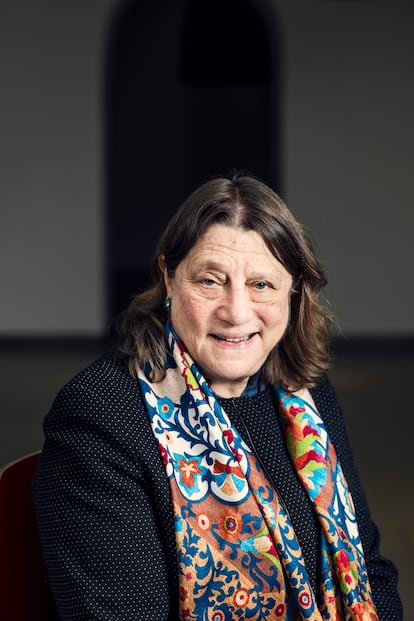
All this involves the final result of the process, but there is also great conflict at the other end, involving the training of generative AI, how the machine “learns.” The New York Times has sued OpenAI (creator of ChatGPT) and Microsoft (its parent company) for having used millions of its articles to train chatbots that now compete with the newspaper. How do you think this lawsuit will end?
Well, I think that behind the lawsuit is a negotiation. The lawsuit itself may have the best written complaint so far because in the earlier cases, the plaintiffs could not show that the machines copied. So what the Times has done is made it quite clear that the machines copied. Now, there is some dispute about whether the outputs which prove the copying are a very small percentage of all the outputs. But I don’t think that matters if what you’re trying to show is that on the input side, that copying occurred. And I think the Times has done a good job of showing that content from The New York Times went in.
So the problem is that the AI training data was obtained without permission?
Well, I think so. But others would disagree with that. And they would say that it doesn’t matter, that even if you are making copies from content that is available on the internet, what should count is not the input, but the output. So if you copy all these works in order to learn what a Miró looks like, but then what you produce is not a copy of a Miró, but an image inspired by Miró, that output is not copyright infringing. So then the argument is, if the output is not infringing, and the input is necessary to create the non-infringing output, then the input has to be excused as well. That’s the argument, but there’s obviously some rejoinders to that argument. And there’s also another question about wrongful acquisition.
And couldn’t it be argued that this is what human beings have always done? That is, creating new things from everything you know, building from everything you have heard, seen and read, much of which, obviously, is copyrighted.
I reject that analogy. Because a human being is not a machine. So a machine makes copies. These machines make copies on a very, very big scale. And I think that is a significant difference. Even if, for example, you’re an art student and you look at Las Meninas because you want to study Velázquez, and you want to do your own variations on Las Meninas, you might also make sketches. Nobody is going to consider that you are a copyright infringer for making your private study sketches. But these systems are doing it on a massive scale.
Are all the products that come out of these machines copies?
Do you mean the output?
Yes.
The output may or may not either be a verbatim copy, like we saw from The New York Times. It may be an altered copy, like it has happened with some pictures from Getty Images. Or it may truly be newly generated based on what the system has learned about it. There are lots of pictures of bottles. And the machine can generate a picture of a bottle that may not be copied, or at least there may not be anything recognizable in a source picture of a bottle because the machine will have seen hundreds of bottles which will allow the machine to make its own representation of a bottle. And I think that what the AI advocates or entrepreneurs would like to have us believe is that everything that the AI system does is like the bottle, that the machine is simply learning and newly independently generating an image or words or music that is not substantially similar to any of the source works. And that may be true sometimes, but it does not appear to be true all the time.
So, will we have to go case by case to see if this is so?
Well, that depends. If your analysis of the inputs hinges on the outputs, it will be case by case. But forget the output. It’s the copying at the input stage that is an independent violation. And whether or not the outputs are infringing does not obscure the fact that there is a market for licensing training data [which companies can resort to legally; OpenIA, creator of ChatGPT, has already reached deals with several companies].
But if the authorship is not clear, who is making the copy?
On the input side, that’s an easier question than the output side. So on the input side, it is probably the entrepreneur who is assembling the training data. The output side is harder because first of all, you may have a whole lot of different people asking for outputs. And do we consider that they might be liable for asking for an output or the system that made it possible for the user to ask for an infringing output? And the answer to both may be yes, but it’s more complicated.
Do you think that the recently approved European standard on AI is going to clarify some of these dark points?
I don’t know, because I really haven’t studied the text.
It obliges companies, for example, to publish detailed summaries of the content used for training.
As far as I understand, the transparency obligation is very important and has been resisted in the United States.
Leaving aside the legal part for a moment, are you afraid of some of the changes that AI can bring? For example, I think there are actors in your family, are they afraid of losing their job?
Well, my son does a lot of voice work, and I think voice actors are the ones who are most imperiled. My son has tried to organize voice actors to make sure that they do not sign anything in their contracts authorizing the producer to take the sounds of their voices and do other things with them. The actors are a little worried that motion picture producers and record producers want to do more than just reconstruct the replicas as kind of an emergency measure. They’re concerned that the replicas will just replace them. That’s what the actors and scriptwriters’ strike last year was about.
Should creative industry professionals be very careful about what they sign in their contracts?
Yes.
And remain alert over the next five to 10 years?
Definitely. And they should look at contracts they already signed. They should look at them carefully.
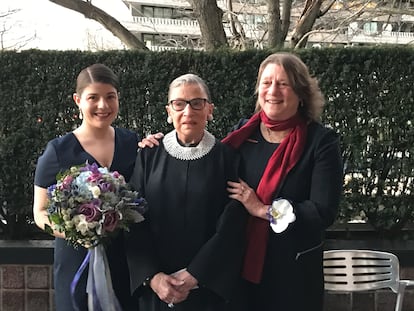
Do you mind if I ask you some questions about your family, about your mother?
Well, you can ask and I'll see if I answer.
In a family environment like yours, it is easy to imagine why you became interested in law. But, at the same time, given the achievements of your parents in that field [not only her mother, since her father was a tax lawyer who taught at numerous universities], it does not seem like an easy decision. How did it happen?
To some extent, for a lack of opportunities in other areas, but also that law is interesting. And I went into an area of law that neither of my parents were involved with.
Your mother had to overcome many obstacles to succeed in a field dominated by men. I’m guessing you had to overcome some too. Do you think women still have to overcome more obstacles than men to succeed professionally?
Yes, and I’m not sure how much better it is from the beginning of my career as a lawyer and the beginning of my daughter’s career as a lawyer. I think it’s very different between the beginning of my career and the beginning of my mother’s career. When she started law school, I think she was one of nine women in a class of 500 men. When I started, we were about 25% women, and when my daughter started, it was about 50% women. So there has been a progression in that respect. Of course, in my mother’s generation, she had a very difficult time getting hired because she was a woman and because she was a mother and because she was Jewish. But she has also said in some respects, that the closing of so many doors led to her opening doors that she might not have gone through if the other doors had been opened. And her good friend and colleague on the Supreme Court, Sandra Day O’Connor, who was the first woman on the supreme Court, has been quoted as saying, with respect of both herself and my mother, that if women had had more opportunities in those days, they would probably be retired partners at law firms and not on the Supreme Court. I am not suggesting that it is a good idea to limit women’s opportunities in the hope that a few will make it to the top by a circuitous route. But I think that their experience was certainly different from mine, that I had relatively few occasions of believing that I might not have been hired for a job because I was a woman. And I don’t think my daughter did either. But where law firms, and indeed, American society in general, are terrible is childcare. And unfortunately, women still bear the greatest responsibility for childcare. So that means that in my day, but also in my daughter’s day, women work what has been called two shifts. You have the shift at work, and then you come home and you have another shift at work, because you have childcare and you have household responsibilities, and maybe you have to cook. So it’s not only the law practice, I think it’s society in general, but it is a big problem that particularly in the United States, we do not have any kind of rational or affordable system of childcare.
Besides struggling to find a life-work balance, is the situation of women in the United States worse now than it was five or 10 years ago?
Well, since the Supreme Court overturned Roe versus Wade and deprived women of autonomy, for these women in states that have banned abortions, yes, it’s much worse. To some extent, it has created a political awakening, which I suppose is a good thing, but it’s a bad thing that this awakening had to occur in this context.
Do you think it has to do with the arrival of Donald Trump, not only to the White House, but to the front line of politics?
No. It is a very bad situation in many states in the U.S.. I live in New York. New York has a very permissive policy. So in New York, a woman does not have to bear a child. But in many other states, that’s not true. And, of course, now there is a challenge that is before the Supreme Court, which could make things really, really bad, because a judge in Texas held that the Food and Drug Administration was wrong in approving one of the drugs for a medical abortion most widely used in the United States. And if the Supreme Court affirms the lower courts in that case, then that will very severely limit its use nationwide. And also the decision is of greater importance than just abortion — not that abortion is a small issue — because it actually challenges the authority of federal administrative agencies. That’s not just a question of women’s rights, that’s a question of the structure of the United States government.
One of the candidates for the US presidency in this year’s election faces several trials for serious crimes. Do you think the judicial system is going to be harmed in any way?
I’m not competent to answer that. We’ll see.
Sign up for our weekly newsletter to get more English-language news coverage from EL PAÍS USA Edition
Tu suscripción se está usando en otro dispositivo
¿Quieres añadir otro usuario a tu suscripción?
Si continúas leyendo en este dispositivo, no se podrá leer en el otro.
FlechaTu suscripción se está usando en otro dispositivo y solo puedes acceder a EL PAÍS desde un dispositivo a la vez.
Si quieres compartir tu cuenta, cambia tu suscripción a la modalidad Premium, así podrás añadir otro usuario. Cada uno accederá con su propia cuenta de email, lo que os permitirá personalizar vuestra experiencia en EL PAÍS.
¿Tienes una suscripción de empresa? Accede aquí para contratar más cuentas.
En el caso de no saber quién está usando tu cuenta, te recomendamos cambiar tu contraseña aquí.
Si decides continuar compartiendo tu cuenta, este mensaje se mostrará en tu dispositivo y en el de la otra persona que está usando tu cuenta de forma indefinida, afectando a tu experiencia de lectura. Puedes consultar aquí los términos y condiciones de la suscripción digital.
More information
Archived In
Últimas noticias
NASA discovers Titan doesn’t have an ocean, but a ‘slushy ice layer’ that increases possibility of life
Innocence lost in the forest of the child soldiers: ‘Each leader of the armed group had his girls’
‘Fallout’ or how the world’s largest company turned an anti-capitalist apocalyptic Western into a phenomenon
From inflation to defending migrants: Eileen Higgins and Zohran Mamdani inaugurate the new Democratic resistance against Trump
Most viewed
- ‘El Limones’ and the growing union disguise of Mexican organized crime
- Christian Louboutin: ‘Young people don’t want to be like their parents. And if their parents wear sneakers, they’re going to look for something else’
- The low-cost creative revolution: How technology is making art accessible to everyone
- ‘We are dying’: Cuba sinks into a health crisis amid medicine shortages and misdiagnosis
- Liset Menéndez de la Prida, neuroscientist: ‘It’s not normal to constantly seek pleasure; it’s important to be bored, to be calm’

